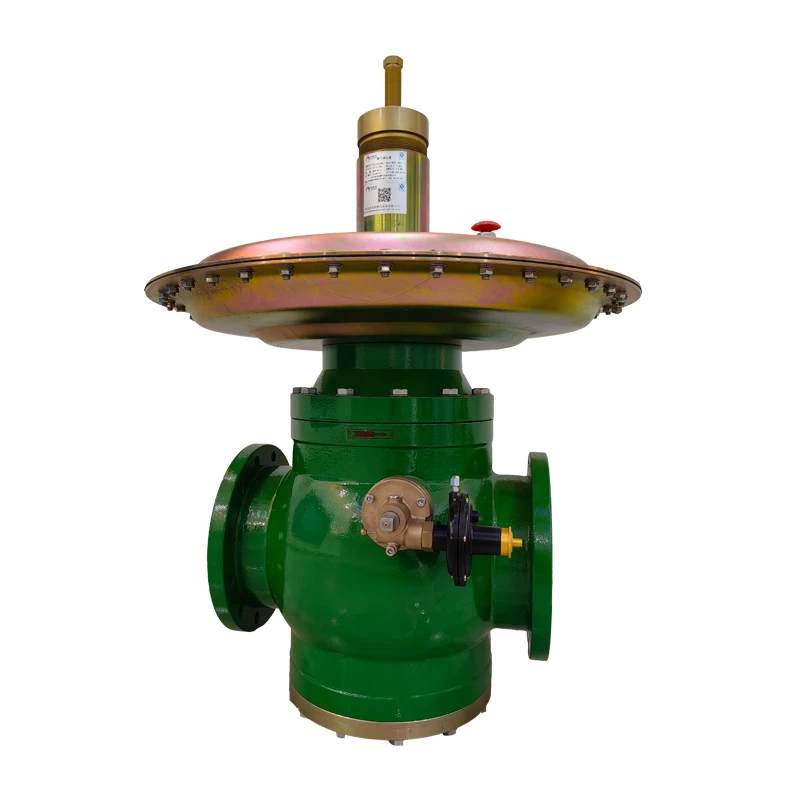
Nov . 06, 2024 08:23
Back to list
gas safety relief valve
Understanding Gas Safety Relief Valves Importance and Functionality
Gas safety relief valves are crucial components in various industrial and commercial applications, designed to protect equipment and personnel from the dangers associated with excessive pressure. These valves play a pivotal role in ensuring the safe operation of gas systems, such as pipelines, storage tanks, and processing facilities. This article explores the importance, functionality, and maintenance of gas safety relief valves.
The Importance of Gas Safety Relief Valves
In any system that utilizes gas, whether it be natural gas, propane, or other industrial gases, maintaining appropriate pressure levels is essential. Over-pressurization can lead to catastrophic failures, resulting in explosions, fires, or hazardous gas releases that pose serious risks to life and property. Gas safety relief valves serve as a protective measure, automatically venting excess pressure when it reaches a predetermined threshold. This function helps to maintain system integrity and avoid dangerous situations.
Additionally, regulatory standards often mandate the installation of safety relief valves in gas systems. Compliance with these regulations not only helps ensure safety but also protects companies from legal liabilities and financial losses associated with accidents. Thus, incorporating gas safety relief valves is not just a best practice; it is a regulatory requirement in many jurisdictions.
How Gas Safety Relief Valves Work
Gas safety relief valves operate based on a straightforward principle they open when the pressure in the system exceeds a specified limit, allowing gas to escape and thereby reducing the pressure. These valves can be designed to function in various manners, such as spring-loaded or pilot-operated, each suited for different applications.
gas safety relief valve

1. Spring-Loaded Relief Valves These are the most common type. They use a spring mechanism to hold the valve closed under normal pressure conditions. When pressure exceeds the set limit, the force of the gas overcomes the spring force, opening the valve to release the excess pressure.
2. Pilot-Operated Relief Valves These valves rely on a secondary pilot valve to control the main valve. The pilot valve opens at a lower pressure, allowing gas to flow and control the main valve's opening. This design offers greater precision and responsiveness, making it ideal for systems with variable pressures.
Maintenance and Inspection of Gas Safety Relief Valves
To ensure efficacy, regular maintenance and inspection of gas safety relief valves are vital. Operators should conduct routine checks to confirm that the valves are not only functioning correctly but are also free from blockages and corrosion. It is important to verify that the set pressure is accurate and that no leaks are present.
Moreover, periodic recalibration may be necessary to guarantee optimal performance and compliance with safety standards. It is often recommended to follow a maintenance schedule that includes testing the valves under controlled conditions to ensure they open and close as intended.
Conclusion
Gas safety relief valves are indispensable in the management of gas systems, providing critical safety functions that protect people, property, and the environment. By understanding their importance, functionality, and the need for regular maintenance, facility operators can foster a culture of safety and compliance. Ensuring that these valves are in peak working condition not only enhances safety but also contributes to the overall reliability and efficiency of gas operations. Investing in proper maintenance and adhering to safety practices will ultimately safeguard against the potentially disastrous consequences of pressure failures.
Latest news
-
Safety Valve Spring-Loaded Design Overpressure ProtectionNewsJul.25,2025
-
Precision Voltage Regulator AC5 Accuracy Grade PerformanceNewsJul.25,2025
-
Natural Gas Pressure Regulating Skid Industrial Pipeline ApplicationsNewsJul.25,2025
-
Natural Gas Filter Stainless Steel Mesh Element DesignNewsJul.25,2025
-
Gas Pressure Regulator Valve Direct-Acting Spring-Loaded DesignNewsJul.25,2025
-
Decompression Equipment Multi-Stage Heat Exchange System DesignNewsJul.25,2025

